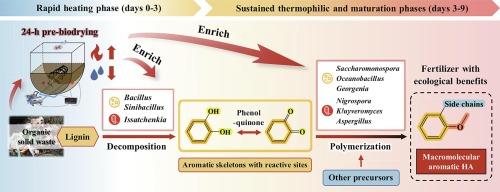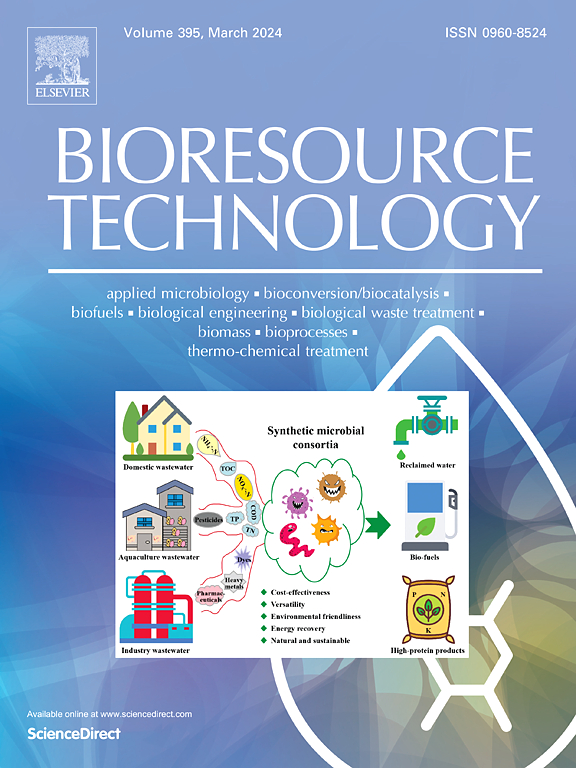Pre-biodrying treatment enhances lignin-related pathways with phenolic hydroxyls as reactive cores to accelerate humification during composting
IF 9.7
1区 环境科学与生态学
Q1 AGRICULTURAL ENGINEERING
引用次数: 0
Abstract
The innovative biodrying-enhanced composting (BEC) process produces highly matured fertilizer within 10 d. To clarify the biodrying-accelerated humification mechanism, structural and molecular variations in humic acid (HA) during BEC were compared to those during 16-d bioaugmented mechanical composting without biodrying. Results showed that BEC produced HA with significantly higher aromaticity and molecular size (p < 0.01). More aromatic skeletons, mainly from biodrying-enhanced lignin decomposition (p < 0.05), contributed to HA aromatization. Reactive phenolic hydroxyls on these skeletons facilitated the binding of other humic precursors, promoting HA elongation. Microbial analysis indicated that Bacillus, Sinibacillus, and Issatchenkia, enriched by drastic heating and dehydration during days 0–3, participated in lignin decomposition. Saccharomonospora, Georgenia, Oceanobacillus, Nigrospora, Kluyveromyces, and Aspergillus contributed to HA elongation during the maturation phase (days 3–9). This study’s findings that biodrying enhanced lignin-related humification pathways by enriching functional microorganisms provides a theoretical foundation for further improving compost humification efficiency.

预生物干燥处理可增强木质素相关途径,以酚羟基作为活性核心,从而在堆肥过程中加速腐殖化。
为阐明生物干燥加速腐殖化的机制,比较了生物干燥强化堆肥(BEC)过程中腐殖酸(HA)的结构和分子变化,以及未进行生物干燥的 16 天生物强化机械堆肥过程中腐殖酸的结构和分子变化。结果表明,BEC 产生的腐殖酸芳香度和分子大小明显更高(p
本文章由计算机程序翻译,如有差异,请以英文原文为准。
求助全文
约1分钟内获得全文
求助全文
来源期刊

Bioresource Technology
工程技术-能源与燃料
CiteScore
20.80
自引率
19.30%
发文量
2013
审稿时长
12 days
期刊介绍:
Bioresource Technology publishes original articles, review articles, case studies, and short communications covering the fundamentals, applications, and management of bioresource technology. The journal seeks to advance and disseminate knowledge across various areas related to biomass, biological waste treatment, bioenergy, biotransformations, bioresource systems analysis, and associated conversion or production technologies.
Topics include:
• Biofuels: liquid and gaseous biofuels production, modeling and economics
• Bioprocesses and bioproducts: biocatalysis and fermentations
• Biomass and feedstocks utilization: bioconversion of agro-industrial residues
• Environmental protection: biological waste treatment
• Thermochemical conversion of biomass: combustion, pyrolysis, gasification, catalysis.
 求助内容:
求助内容: 应助结果提醒方式:
应助结果提醒方式:


